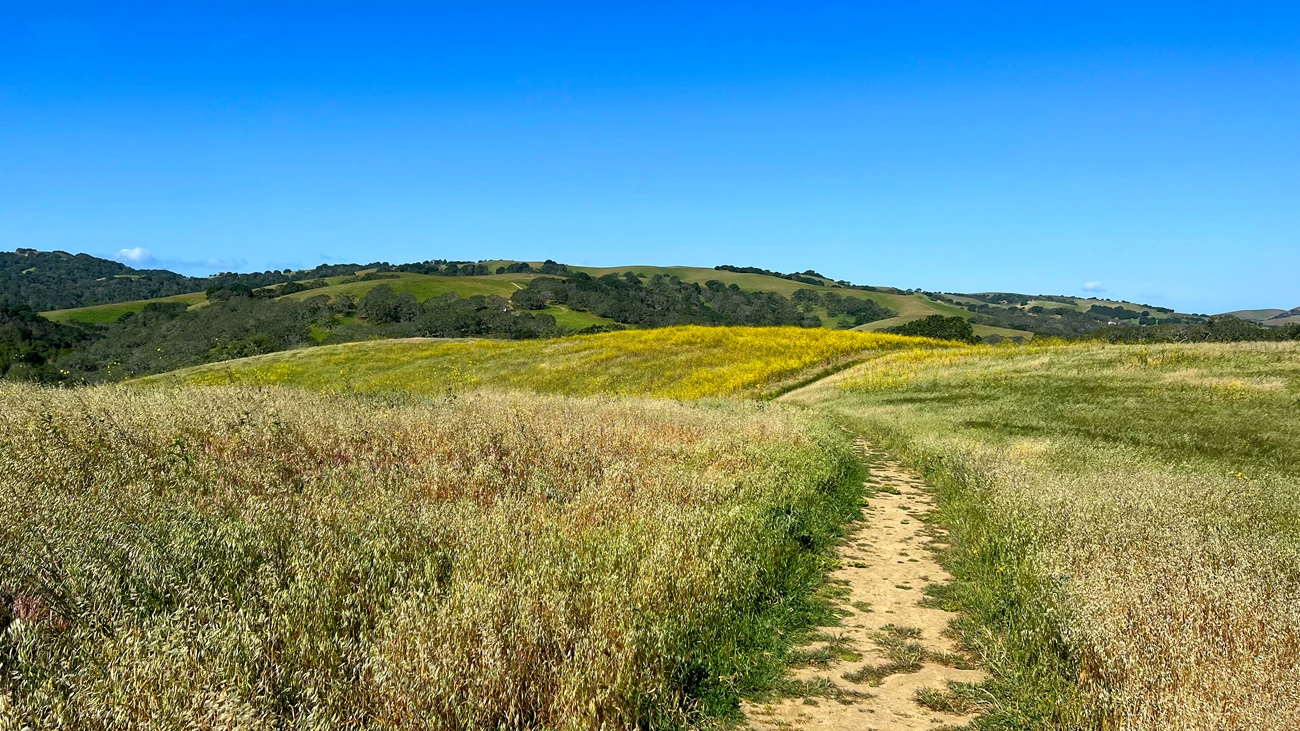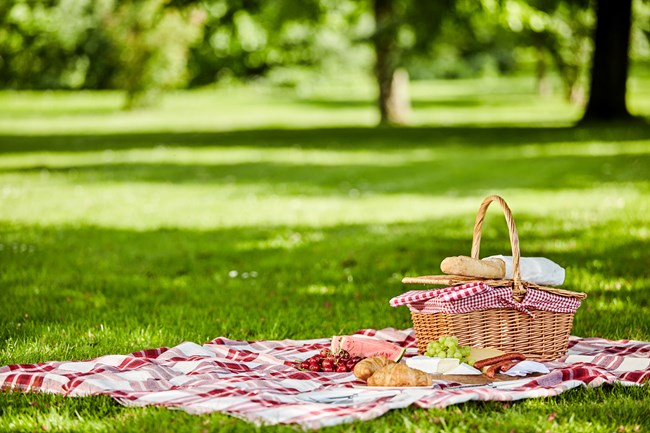
NPS photo/Luther Bailey Outdoor Activities at the John Muir National Historic SiteImmerse yourself in the natural beauty and historical significance of the John Muir National Historic Site through a variety of outdoor activities. Whether you're hiking the scenic trails of Mount Wanda, exploring the historic orchards, or enjoying a peaceful picnic, the site offers enriching experiences for nature lovers, history enthusiasts, and adventure seekers alike. 
NPS photo/Luther Bailey Hiking and Exploring Mount WandaTrail OverviewMount Wanda, named after John Muir's eldest daughter, offers 326 acres of oak woods and grasslands, providing a peaceful hike or a leisurely stroll along a beautiful nature trail. This area was a favorite escape for the Muir family, where John Muir took nature walks with his daughters. Historical BackgroundMount Wanda is closely tied to the legacy of John Muir, one of America's most influential naturalists and conservationists. In the late 19th century, John Muir moved to Martinez, California, after marrying Louie Strentzel. The land that includes Mount Wanda was part of the Strentzel family ranch, which Muir managed and expanded into a thriving fruit orchard. Muir often explored these hills with his daughters, Wanda and Helen, instilling in them a love for nature and the outdoors. The name "Mount Wanda" is a tribute to Muir's eldest daughter, Wanda, reflecting the family's deep connection to the land. These hills were a personal retreat for Muir, offering a place of solace and inspiration. He would wander the trails, observing the flora and fauna, and drawing inspiration for his writings and conservation efforts. Nature and WildlifeMount Wanda is home to diverse ecosystems that include oak woodlands, grasslands, and chaparral. Visitors can enjoy the vibrant flora and fauna that thrive in this environment. Seasonal wildflowers, such as poppies and lupines, create a colorful landscape in the spring. The area is also a haven for wildlife, including:
Hiking and TrailsExplore the hills where John Muir hiked with his daughters, Wanda and Helen. Mount Wanda is open daily from sunrise to sunset. Please come prepared, as no water or toilet facilities are available. Pets are permitted on a leash. Bicycles and horses are allowed on fire roads only. To access Mount Wanda, travel ¼ mile south from the visitor center on Alhambra Avenue to the trailhead parking lot next to Franklin Canyon Road. Trail Classification
Getting StartedMount Wanda is not really a mountain but a series of hills. While generally not a strenuous hike, there is a lengthy incline at the beginning of the trail. The initial hike to the upper trails has an average grade of 13% for about 1 mile. As you reach the upper area, you'll find several path options, which you can see on the entrance kiosk sign. A nice hike from start to finish can last around 1-2.5 hours and provide a good workout. However, many people enjoy a relaxed saunter if that suits their pace better. The trail entrance is not at the main park grounds but about a block down the street. Please check our map section for directions. Due to traffic and safety concerns, do not attempt to walk to the trail entrance from the park visitor center. Practical Information
Tips for Hiking on Mount Wanda
Visitor InformationMount Wanda is accessible year-round, offering a different experience with each season. Spring and fall are particularly popular due to the mild weather and stunning natural displays. The trails are open from dawn to dusk, and there is no entrance fee. However, visitors should be prepared for limited facilities and pack accordingly. ConservationIn line with John Muir's vision, ongoing conservation efforts aim to preserve the natural beauty and ecological integrity of Mount Wanda. These efforts include habitat restoration, invasive species management, and educational programs to promote environmental stewardship among visitors. Exploring the Historic Orchards at the John Muir National Historic SiteExperience: Recreational, Educational, HistoricalImmerse yourself in the rich history and natural beauty of the John Muir National Historic Site by visiting the historic orchards. These orchards, part of the original Muir-Strentzel ranch, offer a unique outdoor activity that combines recreation with a glimpse into the past. Historical BackgroundThe orchards at the John Muir National Historic Site are a living testament to the agricultural legacy of John Muir and his father-in-law, Dr. John Strentzel. In the late 19th century, Dr. Strentzel managed a thriving fruit ranch in Martinez, California. After marrying Louie Strentzel, Muir took an active role in managing the ranch, which included extensive orchards producing a variety of fruits. These orchards not only supported the Muir family's livelihood but also reflected Muir's deep connection to the land and his appreciation for sustainable agriculture. Today, the orchards remain a vital part of the historic site, allowing visitors to connect with Muir's legacy and the agricultural history of the region. Nature and WildlifeThe historic orchards are home to a variety of fruit trees, including:
In addition to fruit trees, the orchards are a haven for local wildlife. Visitors might spot birds such as woodpeckers and blue jays, as well as small mammals like squirrels and rabbits. The diverse plant life also attracts various insects, contributing to the overall ecological health of the area. Activities and ExplorationVisiting the historic orchards is a delightful outdoor activity that offers various ways to engage with nature and history:
Visitor Information
Conservation EffortsOngoing conservation efforts ensure that the historic orchards remain a thriving part of the John Muir National Historic Site. These efforts include:

Archive image. Picnicking at the ParkEnjoy a Delightful PicnicWhether you're looking to bask in panoramic views from the summit of Mount Wanda or prefer the tranquil shade of redwood and pecan trees in John Muir's historic orchards, the John Muir National Historic Site offers a variety of serene spots for a peaceful meal in nature. Mount Wanda Picnic Spots:
Historic Orchards:
Keeping the Park Clean and SafeTo help maintain the natural beauty and cleanliness of the park, please follow these guidelines:
Tips for a Perfect Picnic
Assistance and InformationIf you have any questions about ideal picnic locations or need assistance during your visit, the park staff is here to help. Feel free to reach out to them at the visitor center or look for park rangers on patrol. They can provide you with maps, information on current park conditions, and tips to enhance your picnic experience. |
Last updated: December 19, 2024
